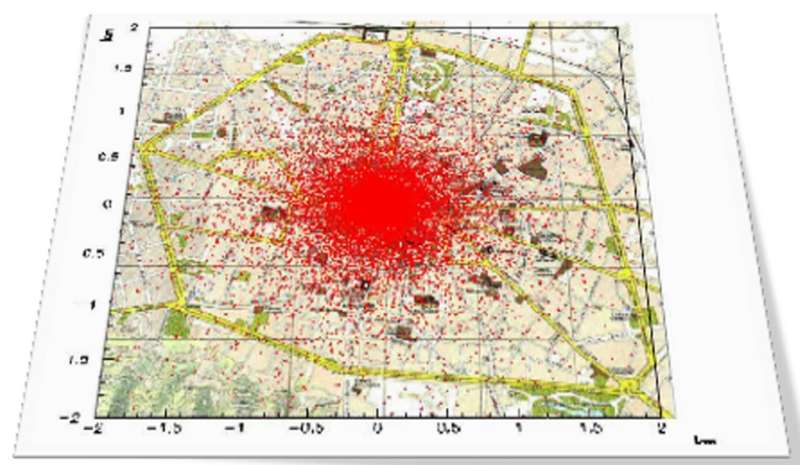Citizen science: From the cosmos to the classroom

Citizen science projects offer the general public, or segments of that public such as school students, an opportunity to take part in scientific research. The Extreme Energy Events (EEE) Project in Italy is a cooperation between particle physicists studying cosmic rays and school students, and their teachers, throughout the country.
This has the twin aims of bringing cosmic ray research into schools and setting up a country-wide ‘open laboratory’ of particle detectors. One of the lead researchers from the EEE Project consortium, Silvia Pisano of the Italian Centro Fermi and Laboratori Nazionali di Frascati of INFN, Rome, Italy, has summarized the results from about 20 years of this project in a new paper in The European Physical Journal Plus .
Cosmic rays are high-energy particles that travel through space at nearly the speed of light; when they come into contact with the earth’s atmosphere they produce a variety of secondary particles that can be detected when they reach ground level. One primary cosmic ray can produce a shower of such particles that completely covers a city the size of, for instance, Bologna. “There are still many open questions about these secondary particles, such as the full details of their energy spectra,” explains Pisano.
The EEE network consists of about 60 detectors or “EEE telescopes” located across Italy, mostly in high schools. Students and their teachers are involved in all aspects of the project: installation and maintenance of the equipment, data collection and analysis, and disseminating the results. “The peculiarity of an experiment designed in this way is that it can look for correlations between events that are hundreds of kilometers apart,” adds Pisano. She and her collaborators are now planning to extend the network to include more schools, including some outside Italy.
Another ongoing development is the design of a mixture of gases for the detectors to replace the powerful greenhouse gas tetrafluoroethane; school students are involved in this and other improvements. “This experiment provides a unique environment for educating future generations in the practice of science,” Pisano concludes.
More information:
Silvia Pisano et al, The extreme energy events project, The European Physical Journal Plus (2022). DOI: 10.1140/epjp/s13360-022-03331-0
Citation:
Citizen science: From the cosmos to the classroom (2023, January 20)
retrieved 21 January 2023
from https://phys.org/news/2023-01-citizen-science-cosmos-classroom.html
This document is subject to copyright. Apart from any fair dealing for the purpose of private study or research, no
part may be reproduced without the written permission. The content is provided for information purposes only.
For all the latest Science News Click Here
For the latest news and updates, follow us on Google News.

